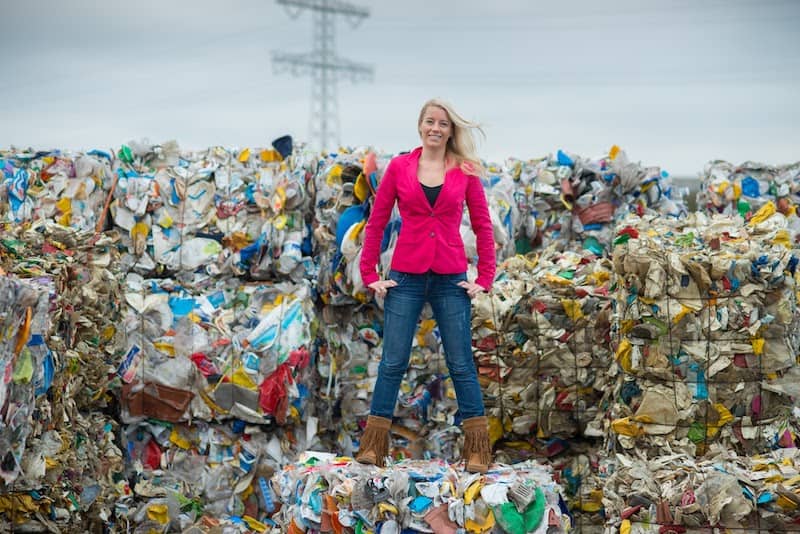
More than 350 million tons of plastic are produced worldwide every year. All these plastics contain a wide variety of chemicals that can be released sooner or later. Some of these are substances that are both harmful to the environment and dangerous to humans and animals. However, the majority of these chemicals have not been extensively scientifically studied, nor do consumers even know about them.
Prof. Stefanie Hellweg, Professor of Ecological Systems Design at ETH University, Zurich, Switzerland, has now worked with a team to classify for the first time all the plastic monomers, additives and processing aids approved for use in the production of plastics on the world market based on usage patterns and hazard potential. The scientists came to an unpleasant conclusion.
Large amount of chemical diversity
In total, Hellweg and her colleagues identified around 10,500 different chemicals that are intentionally introduced into plastic. Of these, 2,489 were found in packaging, 2,429 in textiles, 2,109 in products that come into contact with food, 522 in toys and 247 in medical items (including masks). Researchers rated 2,480 substances, or 24 percent of all substances, as being “of potential concern.”
“This means that almost a quarter of all the chemicals used in plastic are either highly stable, accumulate in organisms or are toxic. These substances are often toxic to aquatic life, cause cancer or damage specific organs,” explains Helene Wiesinger, a doctoral student at the Chair of Ecological Systems Design and lead author of the study. About half are chemicals produced in large quantities in the EU or the U.S., according to the scientists.
“It is particularly striking that many of the questionable substances are barely regulated or are ambiguously described,” Wiesinger continues. To be precise, we are talking about more than half – 53 percent – of the substances of potential concern that are not regulated in the U.S., EU or Japan. As many as 901 of these hazardous substances are officially approved for use in food contact plastics in these countries. Scientific studies are completely lacking for around ten percent of all substances of potential concern.
Plastic monomers, additives and processing aids
Plastics consist primarily of organic polymers. To give the various types of plastic the desired properties, additives such as antioxidants, plasticizers or flame retardants are mixed in. In addition, processing aids such as catalysts, solvents and other chemicals are used during the production process.
“Until now, research, industry and regulators have mainly concentrated on a limited number of dangerous chemicals known to be present in plastics,” says Wiesinger. For example, she says that plastic packaging is at the center of the debate as the main source of organic contaminants in food. Phthalate plasticizers or brominated flame retardants have been detectable in house dust and indoor air for some time. In earlier studies, researchers already came to the conclusion that far more plastic chemicals in use around the world are potentially hazardous than previously thought.
The ETH researchers were nevertheless taken aback by the results of their study. “The unexpectedly high number of substances of potential concern is worrying,” says Zhanyun Wang, senior scientist in Stefanie Hellweg’s group. Exposure to such substances can negatively impact the health of both consumers and workers, he said, and can also harm ecosystems. “In addition, problem chemicals can affect recycling processes and the safety and quality of recycled materials,” the researchers point out. And that’s not all, they add. Potentially, even more plastic chemicals could be problematic, Wang fears. “Recorded hazard data are often limited and scattered. For 4,100 or 39 percent of all the substances we identified, we were not able to categorize them due to a lack of hazard classifications.”
Too little data, too little transparency
The researchers see the biggest problem as a lack of transparency for chemicals in plastics as well as “dispersed data silos.” For their study, they reviewed more than 190 publicly accessible directories and data sources from research, industry and authorities over a period of more than two and a half years. Among them, only 60 directories contained sufficient information about additives in plastics. “We found multiple critical knowledge and data gaps, in particular for the substances and their actual uses. This ultimately hinders consumers’ choice of safe plastic products,” comment Wiesinger and Wang.
To achieve the goal of a sustainable circular plastics economy, the two researchers believe that “effective global chemicals management” is needed. This would have to be transparent and independent and hazardous substances would have to be fully recorded. In addition, “open and easy access to reliable information is crucial.”
The study appeared in the journal Environmental Science & Technology.
Also interesting:
This is how much microplastics pollute agricultural soils
Instead of plastic: Biodegradable materials made from wood components
Less plastic waste thanks to bioactive paper coating in food packaging







